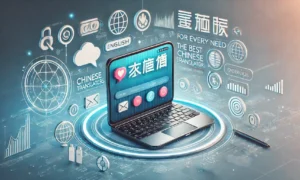Recently, Jason Colodne, Managing Partner at Colbeck Capital, interviewed Elvir Causevic, an early pioneer in IP assets and advisory. In this interview, we get a glimpse into Elvir’s world as he opens up about his experience in the industry, answers common questions surrounding patents, and shares his hopes for the future.
Elvir is the co-founder and Managing Director at Tech+IP Capital, a company exclusively devoted to helping companies identify and monetize value from their intellectual property assets. He received his BS, Masters, and Doctor of Science in Electrical Engineering from Washington University in St. Louis, and his J.D., IP and M&A from the University of California, Hasting College of Law. He is lauded as an innovative inventor and has over 20 patents and patent applications to his name.
Colodne: Can you discuss what initially motivated you to work with IP assets?
Causevic: While I was receiving my doctorate, I was confronted with a unique challenge: I was asked to build something that would improve the worldwide state of knowledge. I was asked to develop something from the bottom up that would make a meaningful contribution. This triggered my thoughts about patents, and about the idea of developing something entirely new. It was at this time that I discovered an interest in IP assets and began to learn about patents and how they worked.
Colodne: Many people have heard about patents and patent licensing but are unaware of the difference. Can you break down the difference between a patent portfolio and patent licensing programs?
Causevic: The primary difference is in how the patents are used.
Most companies have multiple patents that they developed throughout their growth. However, many of these companies do not utilize the patents that they have – the patents aren’t monetized and are basically ignored. This is wasted opportunity. These patents have value, yet the companies are missing the chance to capitalize on their value. When I talk about a company’s patent portfolio, this is what I mean.
In some cases, companies recognize this value and establish an in-house licensing program. That is, they see the benefit of having others use it. They create licensing programs through which they offer non-exclusive licenses to various companies, which allows those companies to utilize the patent. Tthey monetize the license by receiving royalties from the companies. Overall, patent licensing programs are significantly more profitable.
The most notable example is with IBM, the company that started licensing patents. They invented many of the technologies that are used by companies such as Twitter, Google, and Yahoo, and through the years have collected north of a billion dollars on their licensing program. Even today, when companies are developing platforms that are based on IBM inventions, IBM will receive a royalty. And if they don’t, those companies can expect a knock on their door.
Colodne: How can companies better optimize their positions to take advantage of patent licensing?
Causevic: I think they need to step away from old ways of thinking. The traditional mindset was that following an invention, you would file a patent and then take it to market. You would attempt to sell your product and utilize your patent to protect your position.
However, as I mentioned previously, many companies are no longer leveraging these patents – they are actually non-core to the product they are selling. Plus, we are witnessing more patents going unused today as a result of mergers and acquisitions. This is because when one company acquires another, they also acquire that company’s patents. These non-core patents are where the opportunities lie, and this is where companies can better maximize their value through IP assets.
Colodne: Do courts have much influence over the value of patents?
Causevic: They have tremendous influence. For example, the jurisdiction under which patent infringement occurs has an immense impact on the ability of a company to get an injunction. Furthermore, because there are numerous jurisdictions and courts, which are not all synchronized, it can be difficult to navigate among them.
In the US, for example, it is difficult to get a company to stop shipping a product that infringes your patent; typically, if you have a patent, and a company infringes the patent, your best bet would be to seek a financial remedy. However, if you are pursuing a case in places such as the UK or Germany, getting an injunction is easier. Therefore, a court’s decision can drastically impact a patent’s value.
In essence, the way that a company designs an enforcement strategy can impact their success, especially in a time such as now. Let’s say that there is a defendant that you are pursuing, in both the UK and the US, who has infringed on your patent pertaining to a specific phone. Most likely, in the US, you would not be able to resolve the issues, and the defendant would be able to continue their business. However, in the UK, you are able to challenge the infringement, and the defendant would be ordered to quit shipping phones to the UK. This can provide you leverage on an international scale. This is extremely beneficial in current markets because you can generate more cash flow when other companies are struggling to turn a profit.
If executed properly, there is a very large reward in IP assets. However, this is what I like to call the ‘Sport of Kings’ – It is very expensive and timely, but the return can be well worth the effort.
Colodne: So, when it comes to software and hardware patents, are valuation and leveragability different?
Causevic: Software and hardware patents are very unique compared to more tangible items.
Let’s start with software patents. They are harder to write, and it can be difficult to prove infringement because there is no universal data center for proving infringement. Today, this challenge has only been exaggerated by the cloud.
In addition, software patents are difficult to attach damages to, and this disrupts patent litigation. For example, let’s look at Facebook, one of my common examples. The website has many features, but not all are associated with the profit of the company – really, the company profits from advertising. However, say that someone has the patents to an attribute on the site – such as the thumbs up and thumbs down icons – the question would be, how much revenue is owed for that feature? It is difficult to determine because the users do not actually pay for that feature.
Another example is the Alice case, in which patents were deemed invalid because the claims concerned abstract ideas. It made the patent process more confusing and upset much of the patent community. What’s worse, the case provided no direction for lower courts on how to deal with software patent infringement, creating more challenges for businesses today regarding valuation and leveragability.
With hardware patents, on the other hand, it is easier to prove infringement. You have the ability to physically dissect the hardware and assess the data to prove infringement – something that is not a possibility with software patents.
Colodne: I get the feeling the average person doesn’t know a lot about how patents and licensing work. Are there any common misconceptions surrounding IP assets that you’d like to dispel?
Causevic: Just because you work with patents does not make you a patent troll. Too many times I have heard of companies disregarding opportunities with patents because they want to avoid this label.
Colodne: Can you explain what a patent troll is and what you mean by this?
Causevic: A patent troll, in the simplest terms, is someone who buys cheap patents on the market and then pursues numerous lawsuits claiming patent infringement to gain monetary compensation. For example, they might send 10,000 letters to people threatening to take them to court – their goal would be to get a few recipients to pay, say $25,000, in order to prevent further legal action. This is a blatant abuse of the legal system.
Many companies are now so concerned with earning the notorious label of patent troll that they miss out on the potential to earn additional revenue. For example, I have received calls from companies that just inherited a portfolio of patents during a merger or acquisition basically for free. This suggests that the seller’s board chose to ignore the value of their IP assets because they were afraid of being branded with the derogatory label of patent troll.
This is unfortunate because companies should pursue infringements when there is a clear case. The companies that I work with have real patents or have invested hundreds of millions in R&D, and they need to recognize the value of their IP assets. Some cases may be handled in court, some out of court. But choosing to protect your assets and hold a patent infringer accountable does not make you a patent troll, and overly-cautious attempts to avoid any association with this can cause companies to lose millions.
Colodne: How much has COVID-19 impacted the monetization of IP assets?
Causevic: Interestingly enough, global crises such as the pandemic actually highlight the value of patents. This is because they are considered a non-correlated asset, meaning they do not fluctuate in value in accordance with a particular industry – they have their own clock, as I like to say.
So, today, we are seeing more companies identifying creative ways to utilize their patents for monetary gain, often by selling them or creating a licensing program. Additionally, companies are utilizing patents as collateral to leverage their position; some are using the patents as collateral when they are issuing debt while others are creating a bankruptcy remote subsidiary and placing the patents in that entity.
One industry in which we are witnessing a serious shift in perspective on patents is the software industry. When software companies get valuations, they are typically focused on revenue, not patents. Today, however, in a time of crises, and at a time when many companies’ revenue streams are in danger, they are starting to recognize the value of their patents. There is a robust market out there, and companies that identify the IP assets’ value can utilize their position to support themselves in such times as these by implementing one of the strategies I previously mentioned.
Colodne: This market is comparatively young – Can you share your insight on its growth through the years and discuss what you anticipate for the future?
Causevic: You are right – this is a very young market, and we were one of the first to enter into the business of valuating IP assets.
I believe what made us successful was our transparency. The industry was previously infiltrated with shady, closed-door deals. There was dishonesty, and people were always looking for a reason to pursue a lawsuit. What we did was bring transparency to these deals and identify a way to assign value to the assets, which was previously unheard of.
Over the years, we have developed an extensive database of patent information, including past transactions and royalty rates. Just like in any other business, you can use the data to assess the value of a patent. So, when an inventor has a patent and wants to understand the value, we can pull from the comparable patents. That means we can look at the twenty-five other similar transactions to understand where the patent would trade at. We can assess the other royalty rates to understand what rate you could pursue. This ability is new since the data did not exist before. Really, we have been able to transform the industry to make it respected an asset class.
In terms of the future, we are just now seeing the field mature – more intermediaries are entering the market and are buying patents to use both offensively and defensively. Since the business is still so new, this is considered risky, and the subtleties can be difficult to navigate. However, the best method for determining whether a transaction has been executed smoothly is to look at the rates that we are able to charge.
We are still moving forward and experiencing growth. I think that what we will see more of in the future are market-clearing mechanisms such as patent auctions and market. They have not found great success yet, but I think that is where the future of these assets is.
For more information on Jason Colodne read his biography here.



































